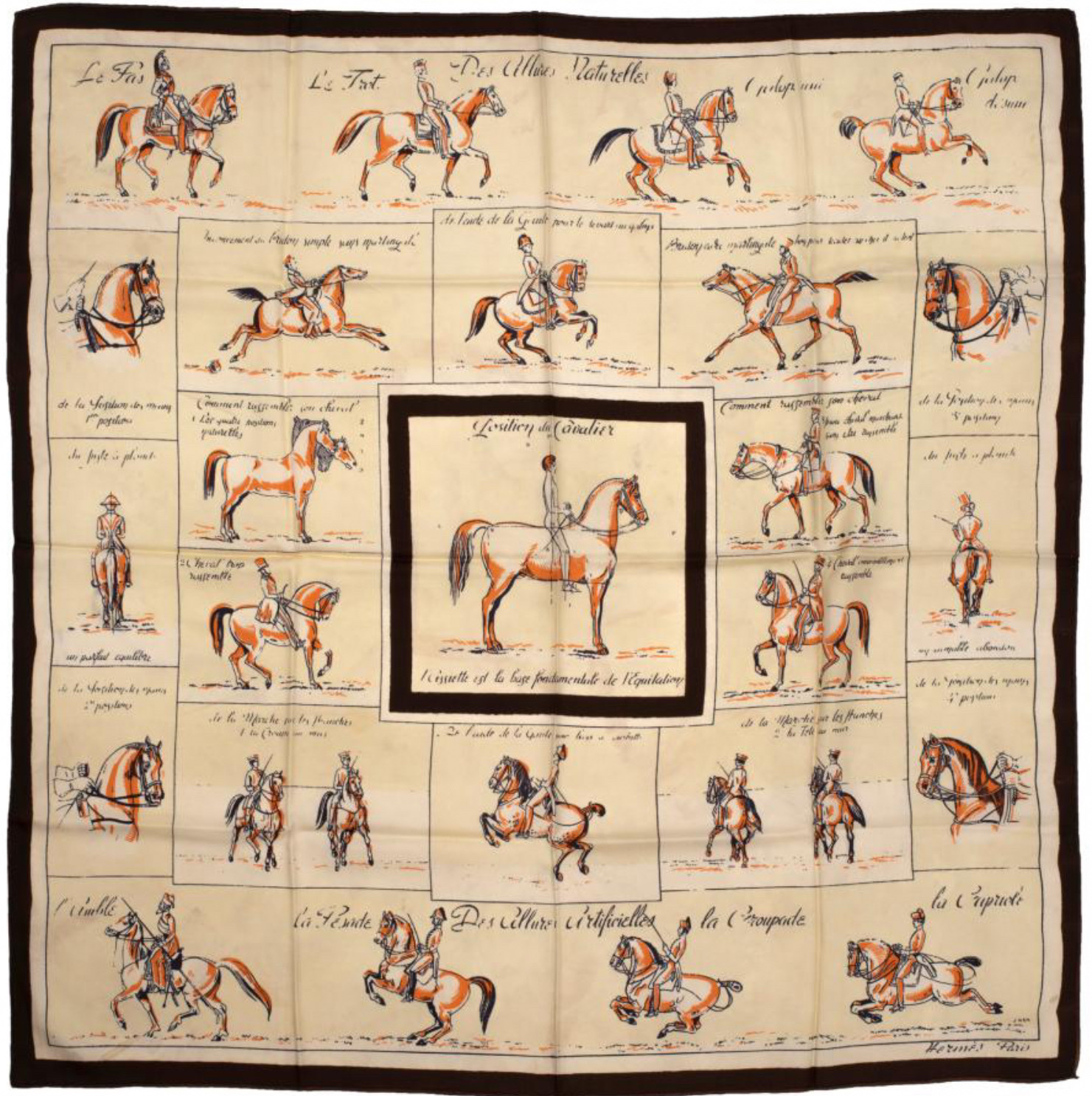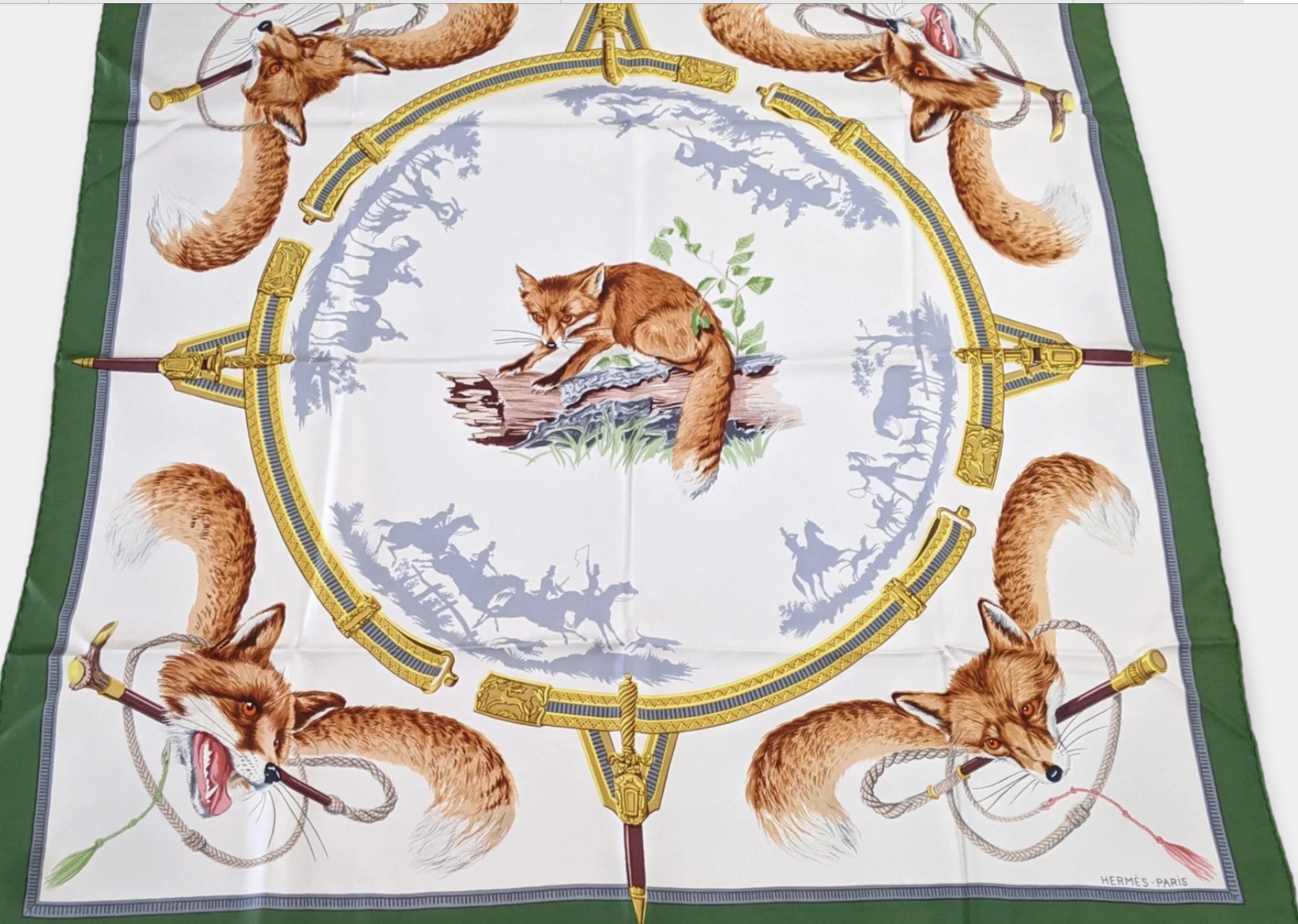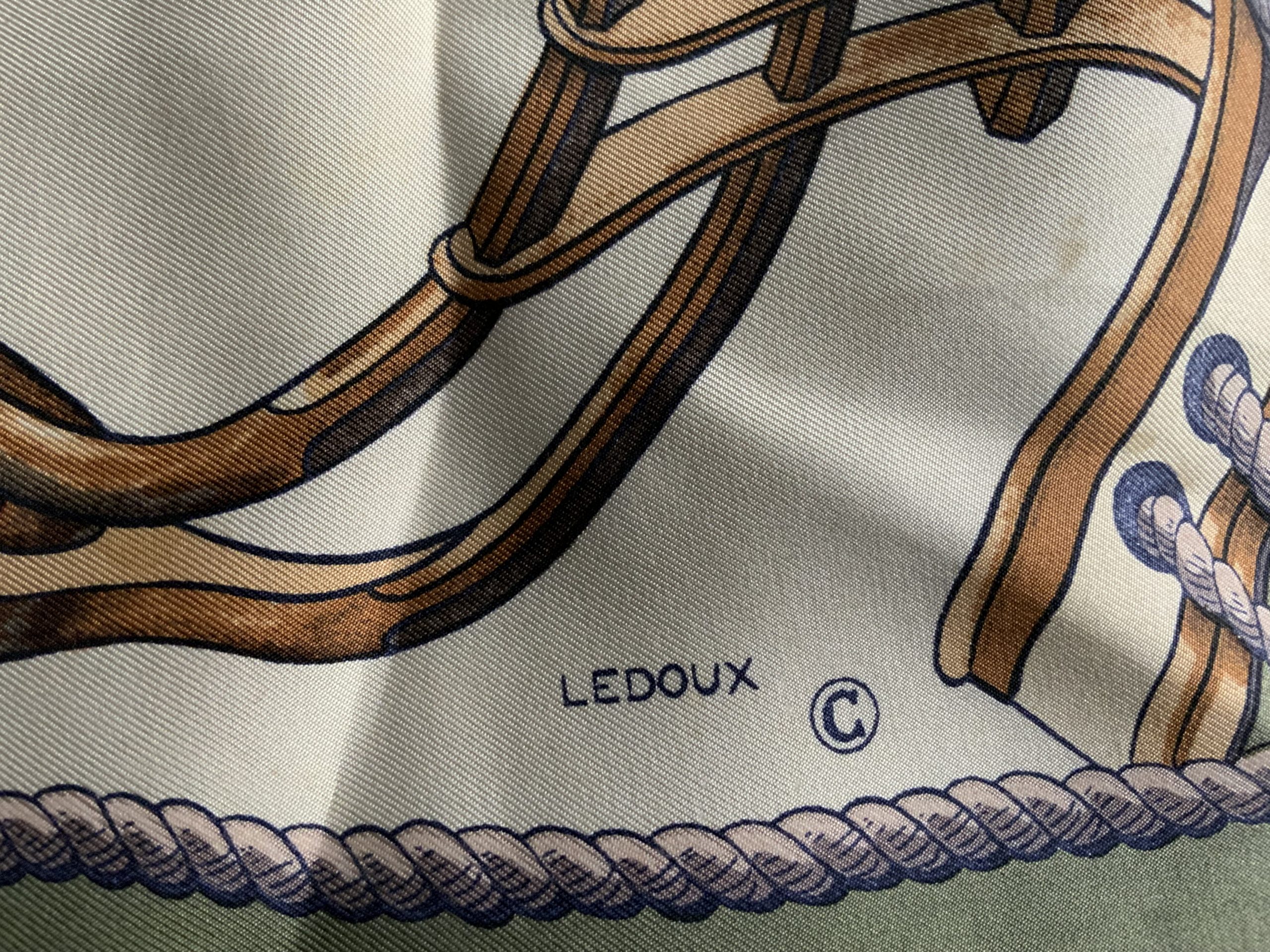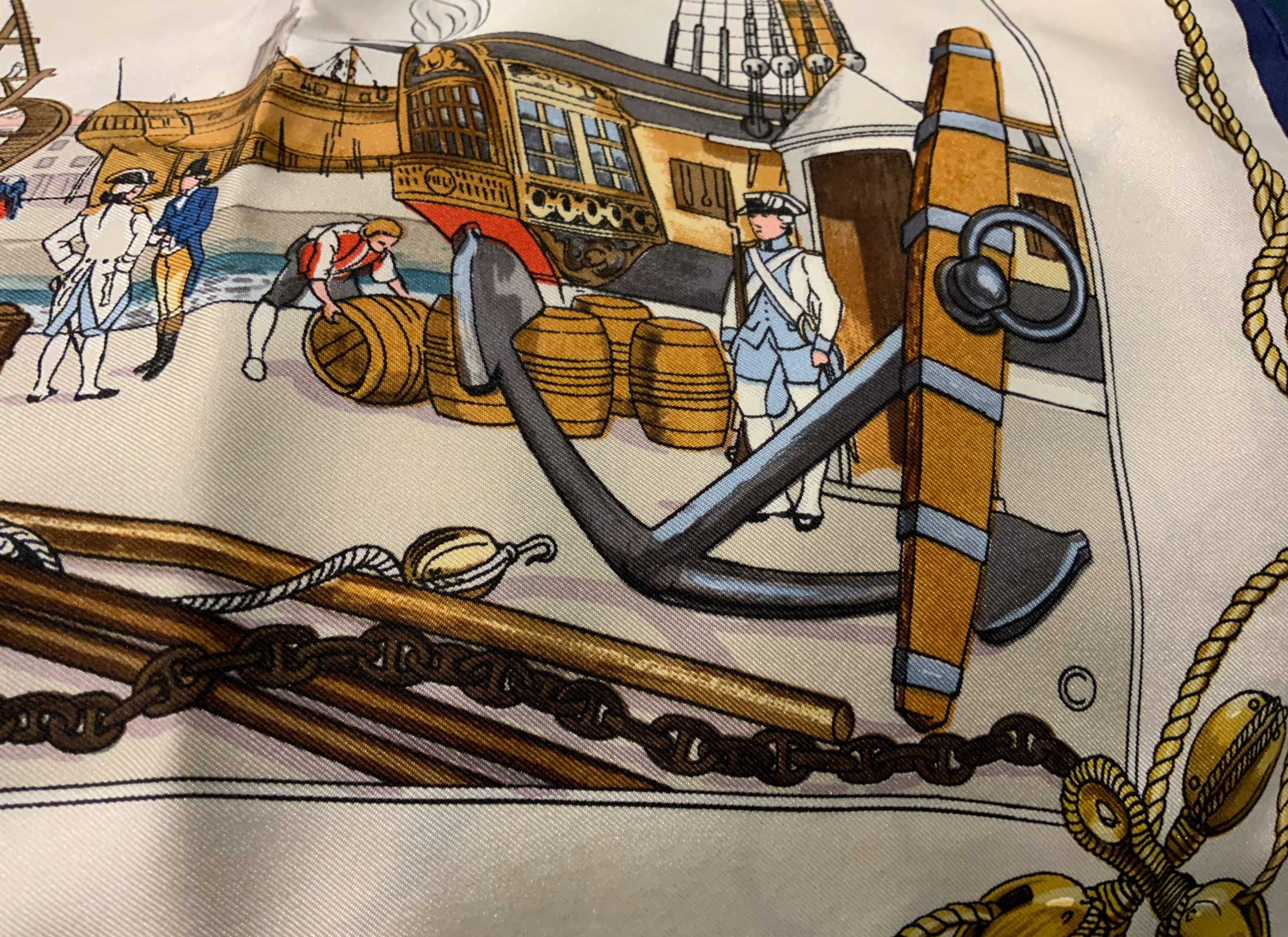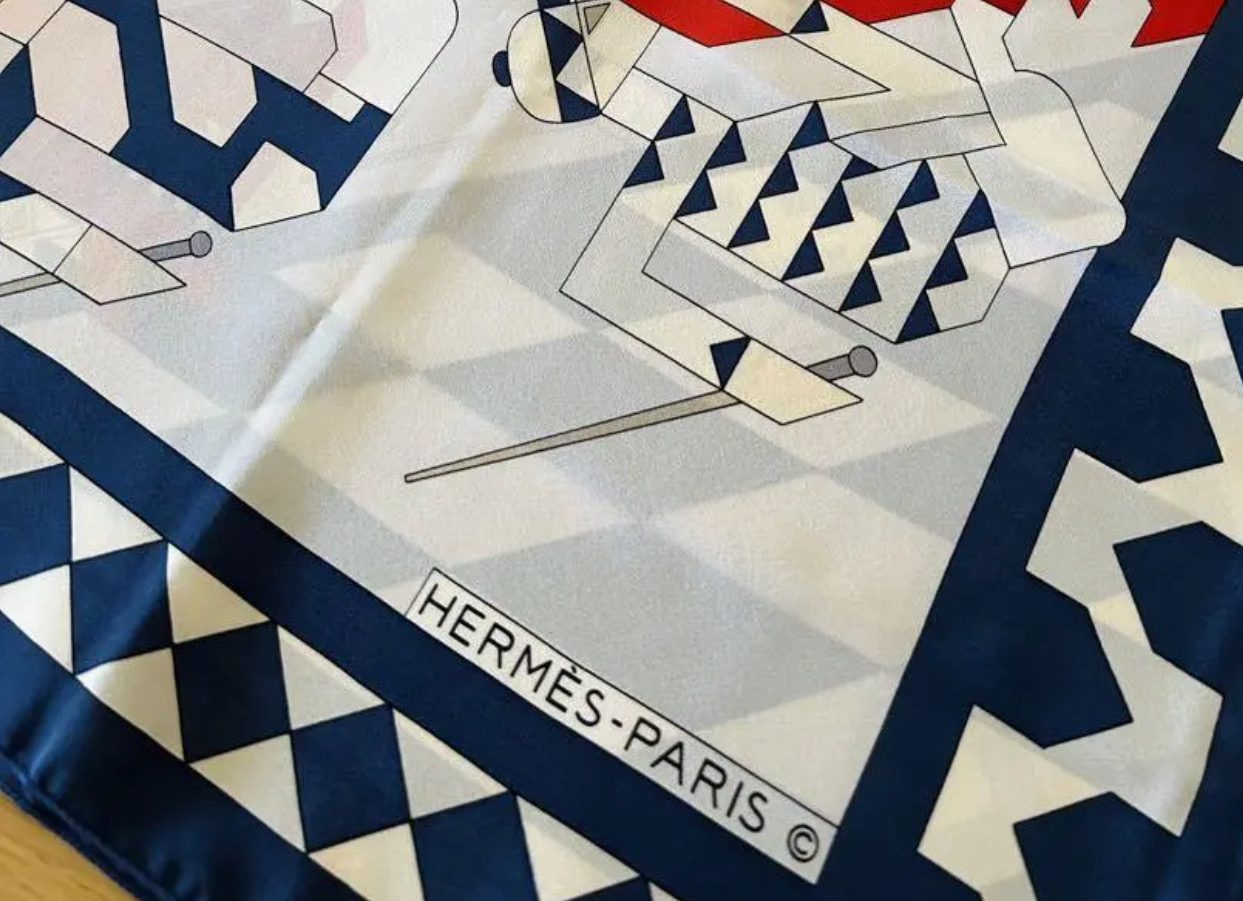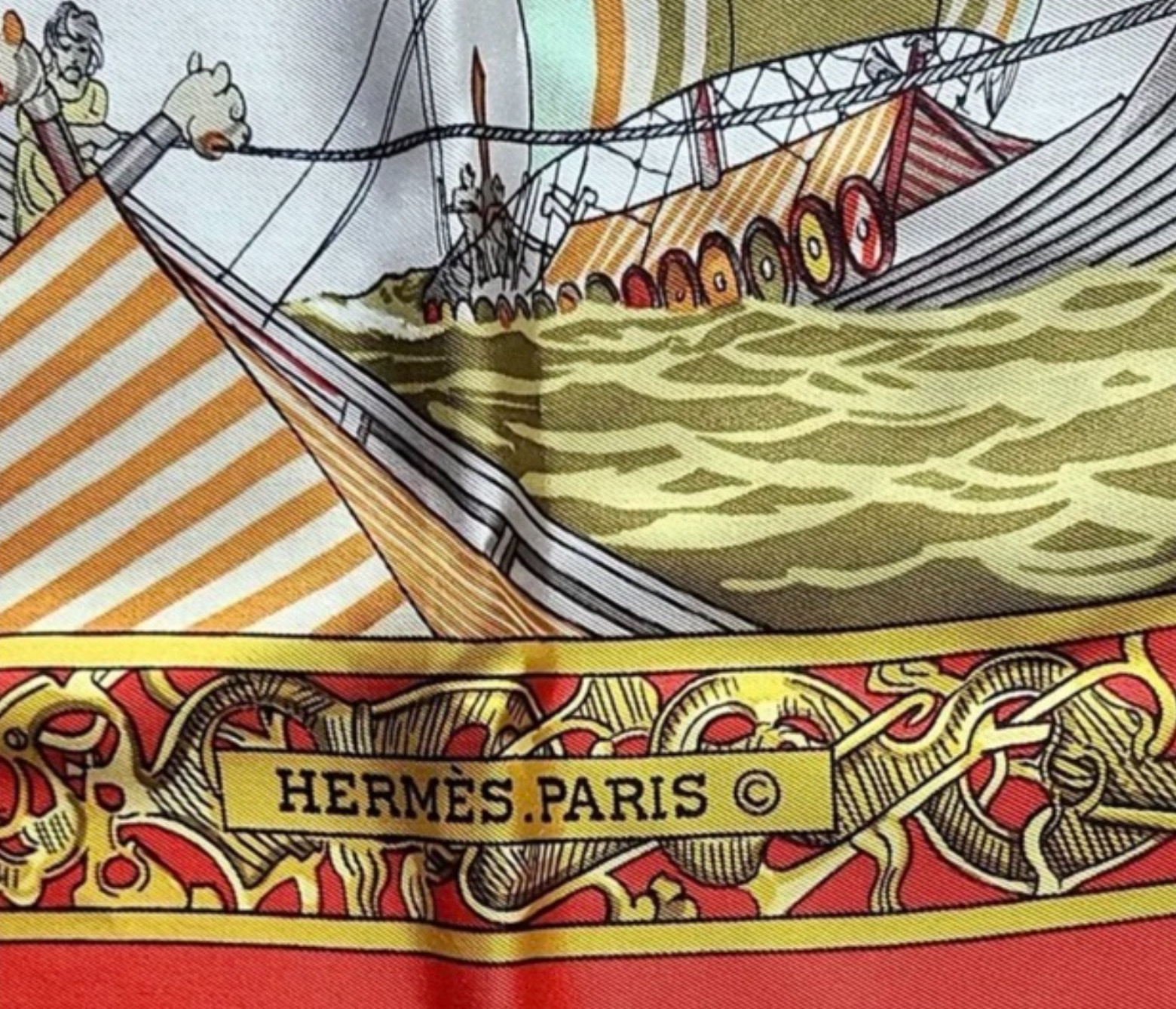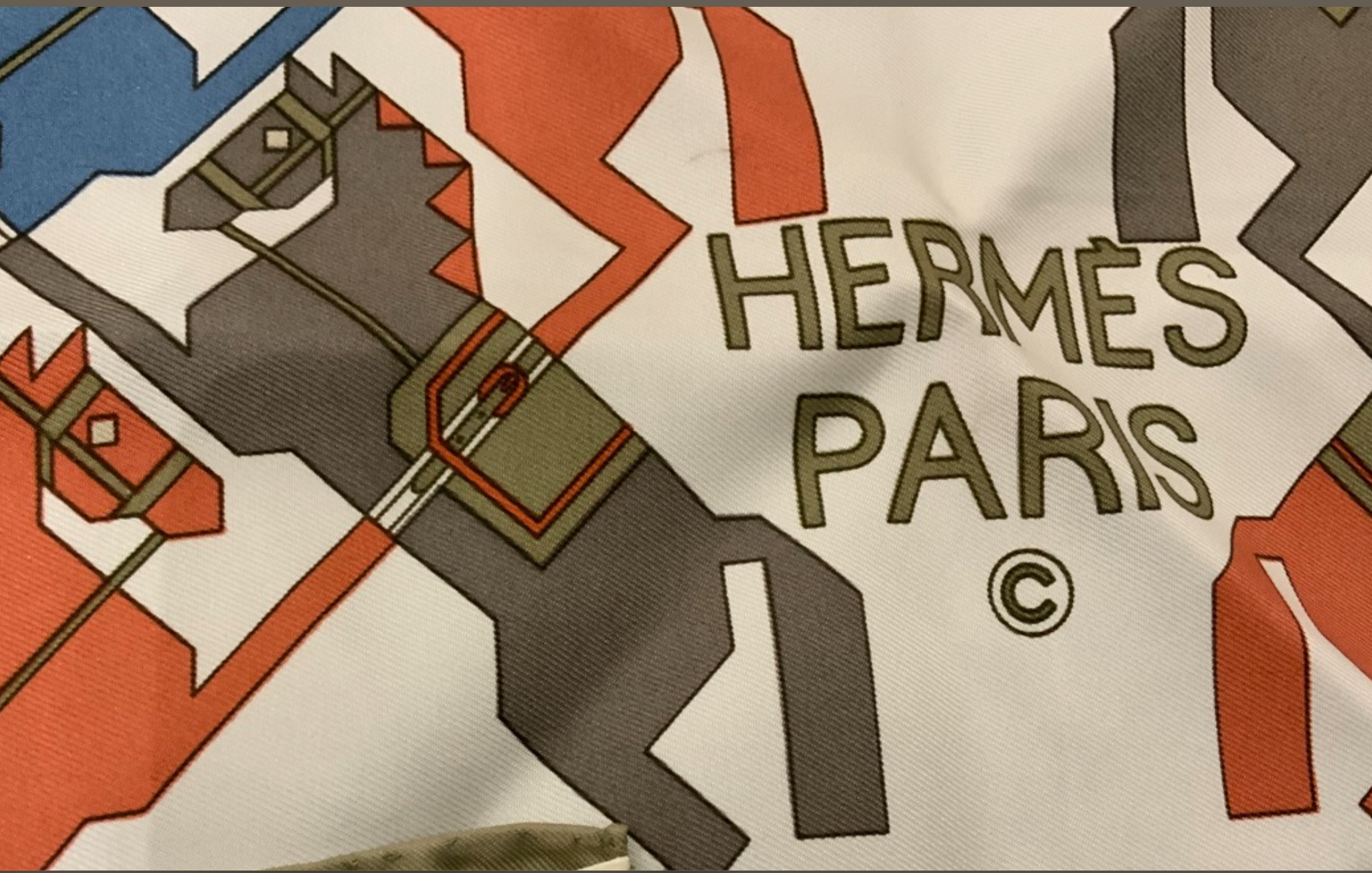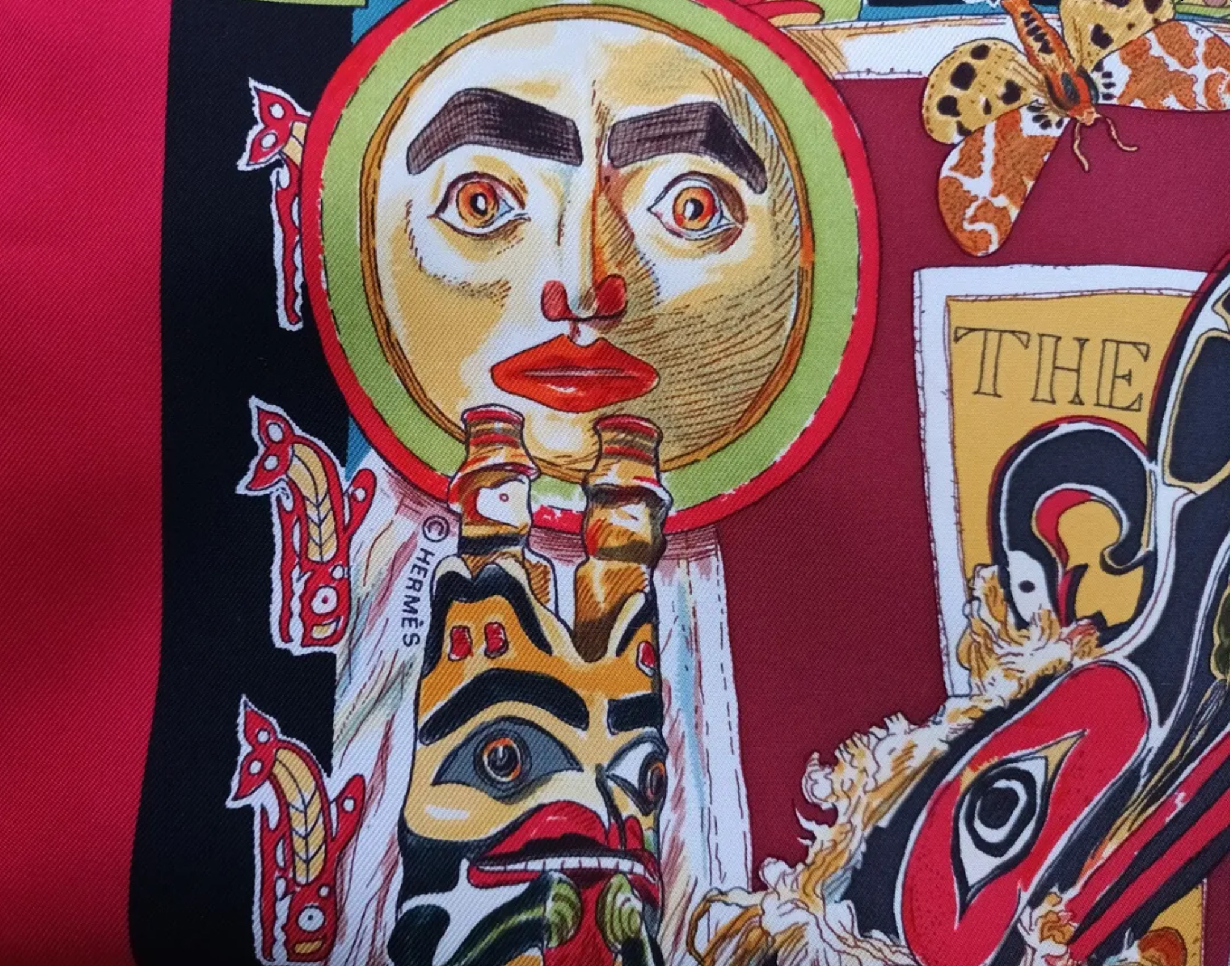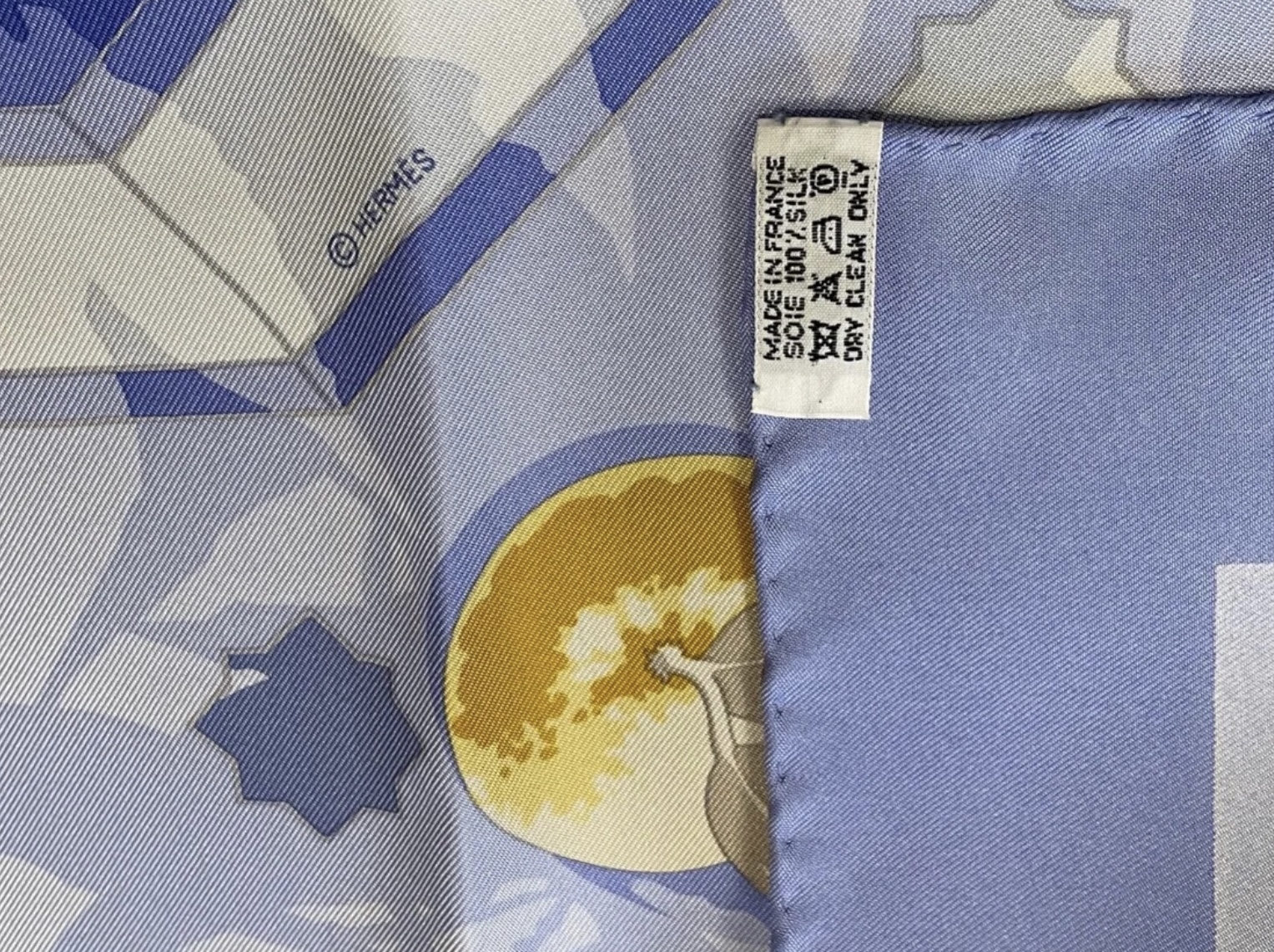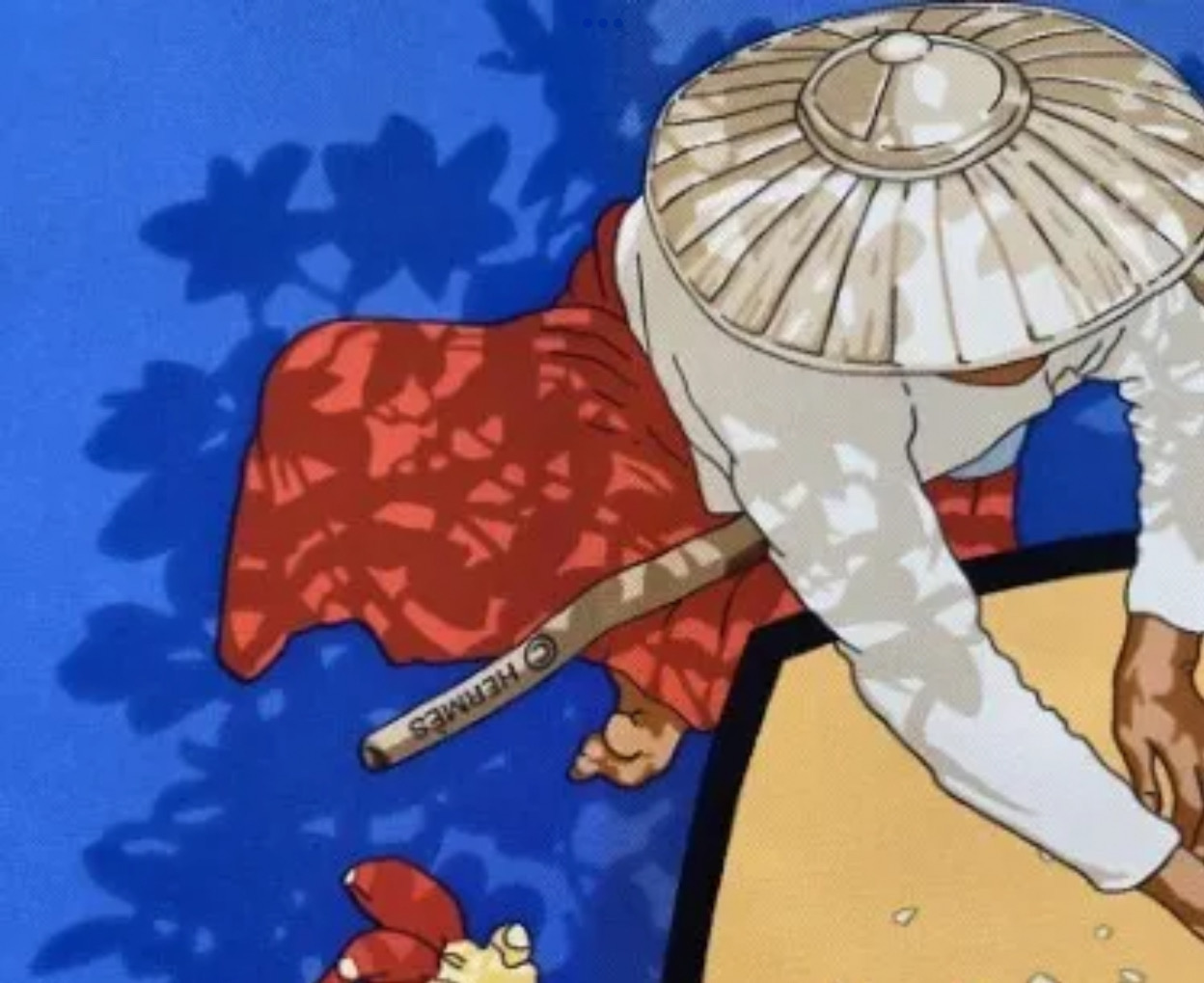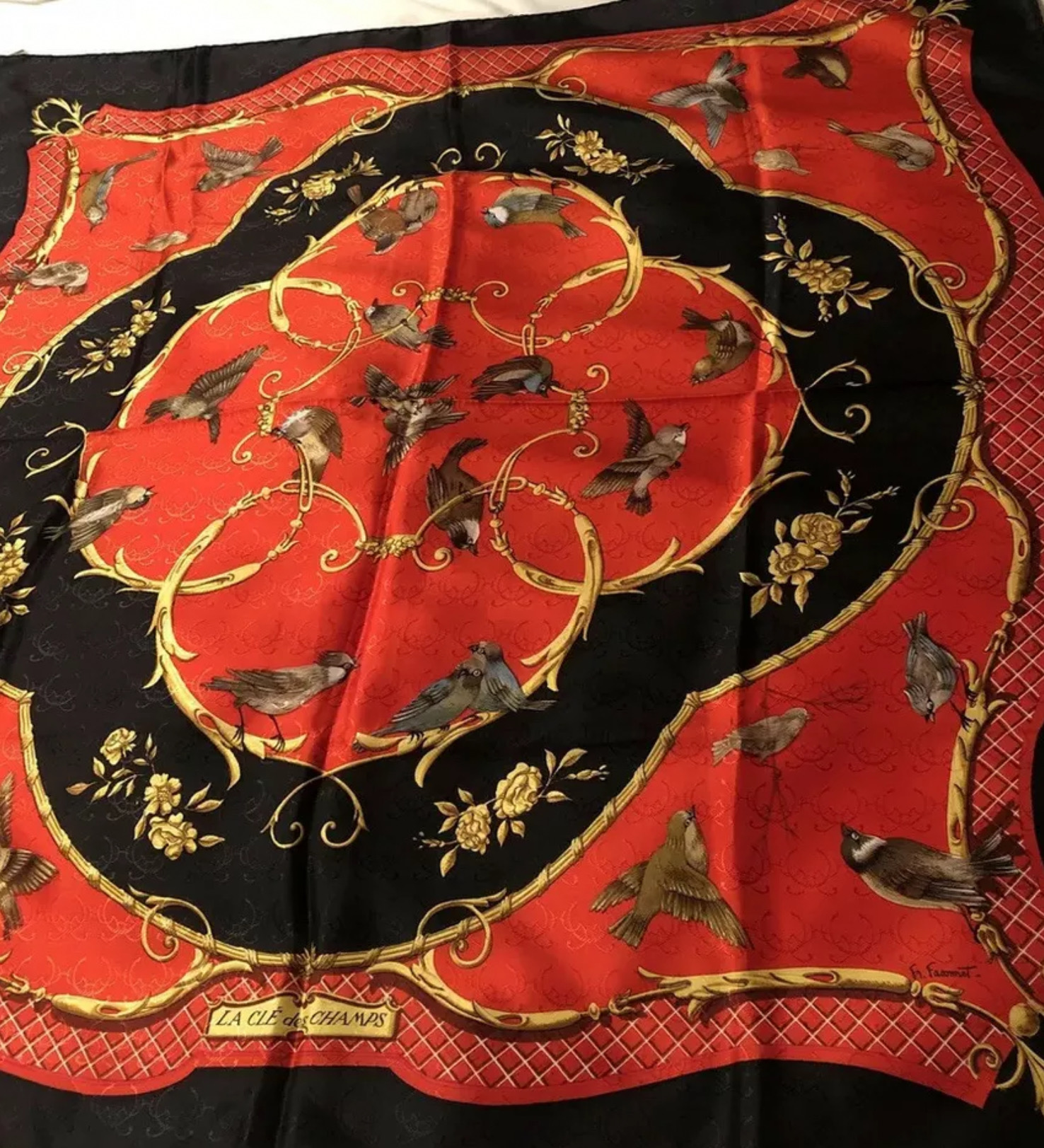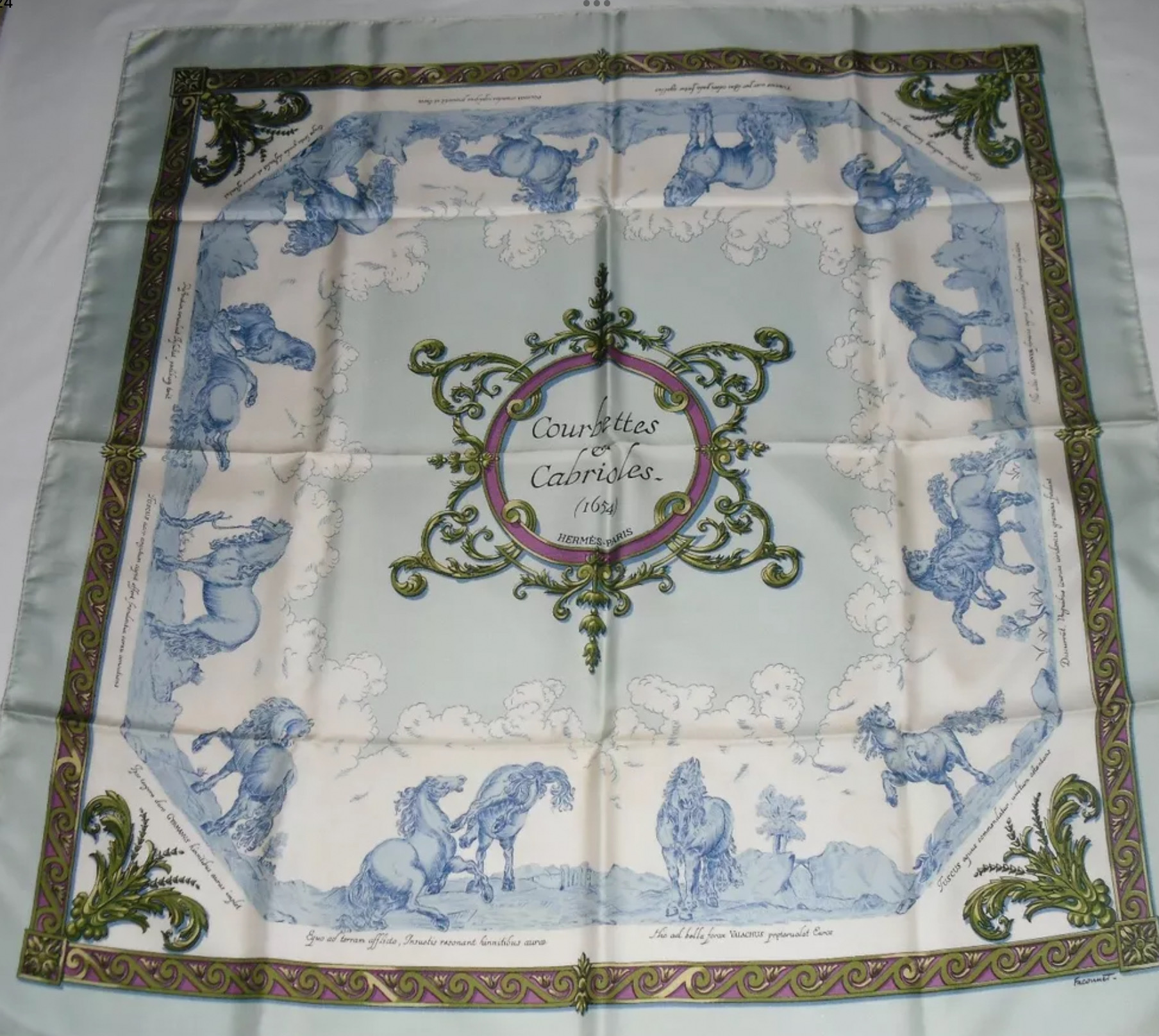Tissus Fabriques
Material
- Natural Fibers
- Silk
- Wool
- Cotton
- Synthetic Fibers
- Rayon
- Polyester
- Nylon
- Blended
- Cashmere and Silk
- Chiffon
- Wash – 2020
- Mousseline
- Waterproof Silk – Eva 2000 reissue
Structures
- Weave
- Plain
- Twill
- Satin
- Knitted
- Jersey Silk
Manufacture, Printing & Dying
- 250 Mulberry Moth cocoons / scarf
- 37 km raw silk filament / scarf
- Colors per scarf 27 avg, 46 max
- 18 months to produce after design
Weave & Printing Intricacies
- Jacquard
- Marble
- Finesse or Eyeliner
- Crepe
- Sabre Silk Twill (1993)
- Parachute Silk
- Vintage Silk – Plain weave, 2009
Silk Twill
Twill is a type of textile weave characterized by its diagonal parallel ribs. It is one of the three fundamental types of weave, alongside plain weave and satin. Here are some key points about twill:
- Diagonal Pattern: In a twill weave, each weft (or filling) yarn floats across the warp yarns in a progression of interlacings to the right or left, forming a pattern of distinct diagonal lines. This diagonal pattern is also known as a wale.
- Weave Structure: Twill requires three or more harnesses on a loom, depending on its complexity. It is often designated as a fraction, such as 2/1, where the numerator indicates the number of harnesses raised (threads crossed) and the denominator indicates the number of harnesses lowered when a filling yarn is inserted.
- Front and Back Sides: Unlike plain weave, twill fabrics have a front side (called the “technical face”) and a back side (the “technical back”). The technical face has the most pronounced wale and is usually more durable and attractive.
- Classification of Twill Weaves:
- Direction of Twill Lines on the Face:
- S-twill (Left-Hand Twill): The twill line runs diagonally from bottom left to top right.
- Z-twill (Right-Hand Twill): The twill line runs diagonally from right to left.
- Face Yarn (Warp or Weft):
- Warp Face Twill Weave: The warp yarn dominates the visible surface.
- Weft Face Twill Weave: The weft yarn dominates the visible surface.
- Double Face Twill Weave: Both sides have pronounced wales.
- Nature of the Produced Twill Line:
- Simple Twill Weave: Examples include 1/2 S and 3/1 Z.
- Expanded Twill Weave: Examples include 4/3 S and 3/2 Z.
- Multiple Twill Weave: Example: 2/3/3/1 S.
Twill fabrics are versatile, draping well and offering a variety of visual effects. So next time you see those diagonal lines, you’ll know it’s twill!
Vintage Silk
Silk Crepe
Cashmere / Silk
Cotton
Wool

